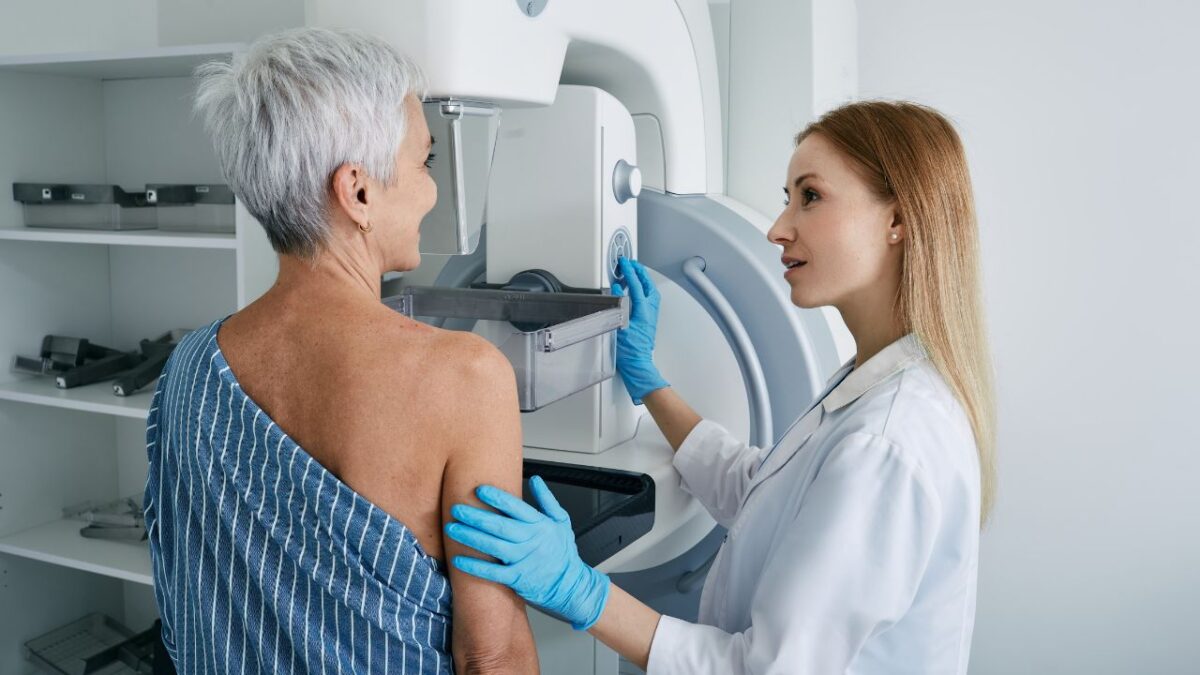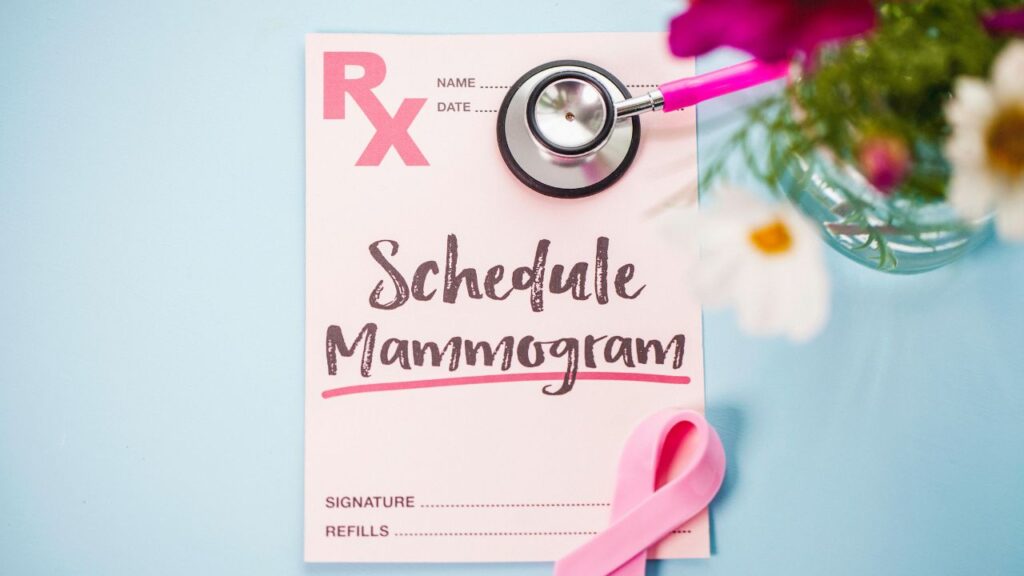Breast Cancer Screening After Menopause: Guidelines And Options

When menopause arrives, many women wonder: Do I still need breast cancer screenings? The short answer is yes—but how often and which tests you need can change after menopause. This guide breaks it down in plain language so you can feel confident about your health choices.
Why Screening Still Matters
As we age, our risk of breast cancer goes up. Even after menopause, regular screenings help catch breast cancer early—when it’s easier to treat. Early detection saves lives.
Think of screening as your safety net: it may not prevent cancer, but it helps you catch it before it becomes serious.
When Should You Get a Mammogram?
Different health groups recommend slightly different schedules. Here’s the simple version:
- U.S. Preventive Services Task Force (USPSTF): Every 2 years from age 40 to 74.
- American Cancer Society (ACS): Every year from 45 to 54, then every 1–2 years after 55.
- American College of Obstetricians and Gynecologists (ACOG): Every year starting at 40.
👉 The bottom line: Most women should get a mammogram every 1–2 years after 40. Talk with your doctor about what’s best for you.
If You’re at Higher Risk
Some women need more than just mammograms. You may be high risk if you:
- Have a family history of breast or ovarian cancer
- Carry BRCA1* or BRCA2* gene changes
- Had chest radiation therapy when younger
- Have a lifetime breast cancer risk of 20% or more (your doctor can help calculate this)
In these cases, doctors often recommend adding breast MRI along with mammograms.
*What Are BRCA1 and BRCA2?
You might hear a lot about BRCA1 and BRCA2 genes when talking about breast cancer risk. Here’s what you need to know:
- Everyone has BRCA1 and BRCA2 genes. Their normal job is to repair damaged DNA and protect us from cancer. Think of them as your body’s “DNA repair team.”
- When these genes are mutated (changed), they can’t do their job well. This increases the risk of cancers—especially breast and ovarian cancer.
- For comparison: The average woman has about a 13% lifetime risk of breast cancer. Women with a BRCA mutation may face a 45–70% lifetime risk.
- Men with BRCA mutations also have higher risks of certain cancers, including male breast cancer and prostate cancer.
- If breast or ovarian cancer runs in your family, or if you have relatives diagnosed at a young age, your doctor may recommend genetic testing (a blood or saliva test).
- If you test positive, you can take steps such as earlier and more frequent screening, preventive medications, or even risk-reducing surgery. A genetic counselor can help you understand your options.
👉 In short: BRCA genes are supposed to protect you, but if they’re broken, your protection drops. Knowing your BRCA status helps you and your doctor make the best plan for prevention and screening.
What About Breast Density?
Breasts with more dense tissue can make it harder for mammograms to “see” cancer. After menopause, density usually decreases—but not always.
If you have dense breasts, your doctor may recommend 3D mammography (tomosynthesis) or sometimes ultrasound, which can provide a clearer picture.
Hormones and Risk
If you’re taking hormone replacement therapy (HRT) after menopause, your breast cancer risk may be a bit higher. That doesn’t mean you should stop HRT if it helps your symptoms—but it does mean screening is extra important.
How to Reduce Your Risk

Screenings are only one piece of the puzzle. You can also take everyday steps to lower your risk of breast cancer and improve your overall health:
- Stay Active: Aim for at least 150 minutes of moderate activity per week (like brisk walking, cycling, or swimming). Regular exercise helps regulate hormones, control weight, and strengthen your immune system.
- Maintain a Healthy Weight: After menopause, carrying extra weight—especially around the waist—can raise estrogen levels, which may increase breast cancer risk. Focus on balanced nutrition and portion control.
- Eat a Balanced Diet: Prioritize whole foods like vegetables, fruits, lean proteins, whole grains, nuts, and legumes. Diets rich in fiber, antioxidants, and omega-3s may help reduce cancer risk.
- Limit Alcohol: Even small amounts of alcohol can raise breast cancer risk. The safest choice is to avoid it, but if you drink, try to limit to no more than one drink per day.
- Don’t Smoke: Smoking is linked to many cancers, including breast cancer. Quitting at any age has health benefits.
- Manage Stress: Chronic stress can affect your immune system and hormone balance. Mind-body practices like yoga, meditation, journaling, or deep breathing may help.
- Get Enough Sleep: Aim for 7–8 hours of quality sleep. Poor sleep can disrupt hormone levels and overall health.
- Know Your Family History: If breast or ovarian cancer runs in your family, share that information with your doctor. You may qualify for genetic counseling, early screening, or preventive strategies.
- Consider Risk-Reducing Medications: For women at very high risk, medications such as tamoxifen or raloxifene may help lower risk. Your doctor can discuss whether this is an option for you.
- Regular Checkups: Keep up with yearly wellness visits. Discuss any breast changes or health concerns with your healthcare provider right away.
Some high-risk women may also consider genetic counseling or even risk-reducing medications (your doctor can explain these options).
Insurance and Access
Most insurance plans, including Medicare, cover mammograms. Still, access can vary. If cost or location is a concern, ask your doctor or local health organizations about free or low-cost screening programs.
Your Personal Plan
Every woman’s health is different. The best screening plan is one that fits your risk, your age, and your comfort level.
👉 Use this simple approach:
- Start at 40 (earlier if you’re high risk).
- Screen every 1–2 years.
- Add MRI if you’re high risk.
- Review your plan regularly with your doctor.
Don’t wait—schedule your mammogram today or talk to your doctor about what’s right for you. Your future self will thank you.
References
American Cancer Society. (2023). Breast cancer early detection and diagnosis. Retrieved from https://www.cancer.org/cancer/types/breast-cancer/screening-tests-and-early-detection.html
American College of Obstetricians and Gynecologists. (2022). Breast cancer risk assessment and screening in average-risk women. ACOG Practice Bulletin, 179.
National Cancer Institute. (2023). BRCA gene mutations: Cancer risk and genetic testing. Retrieved from https://www.cancer.gov/about-cancer/causes-prevention/genetics/brca-fact-sheet
U.S. Preventive Services Task Force. (2023). Breast cancer: Screening recommendation statement. JAMA, 329(5), 419–427.
Disclaimer
This blog is for educational purposes only. It is not medical advice and should not replace a consultation with your healthcare provider. Always talk with your doctor or a qualified health professional about your personal risk factors and the best screening plan for you.
